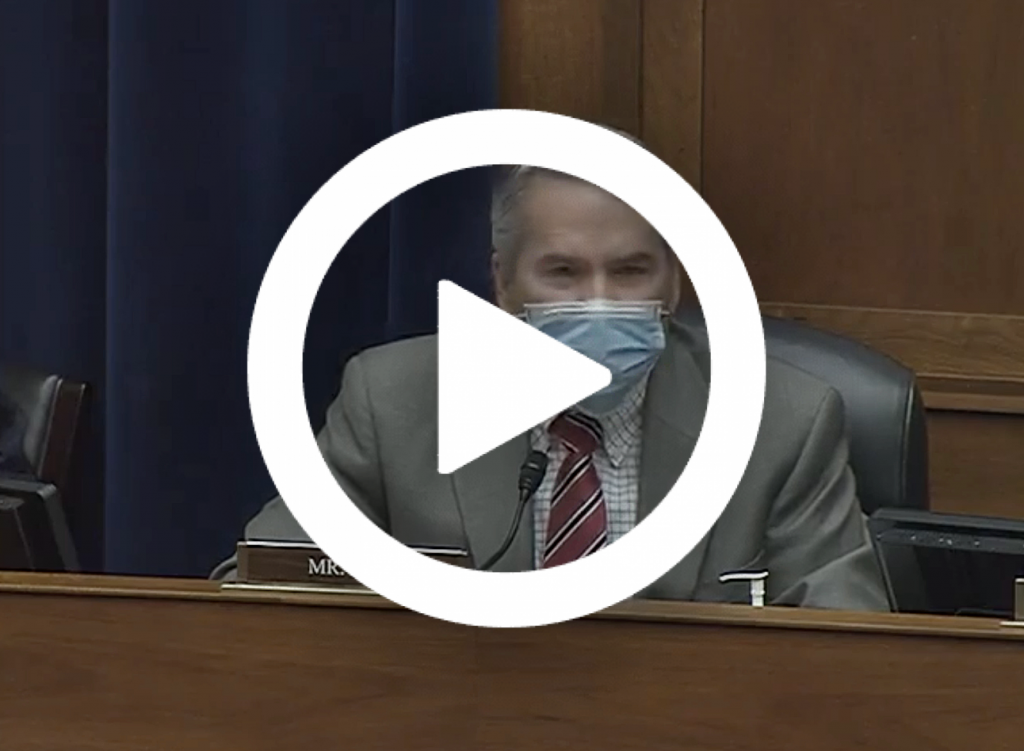Hice: President Trump Revitalized the Federal Workforce
WASHINGTON—Subcommittee on Government Operations Ranking Member Jody Hice (R-Ga.) opened today’s hearing on the federal workforce by outlining several of the effective reform efforts President Trump established to improve the federal bureaucracy and make it more accountable to the American people. In his remarks, Hice chastised Democrats for seeking to undo President Trump’s reform efforts and emphasized morale improved in the federal workforce under President Trump.
Below are Ranking Member Hice’s remarks as prepared for delivery.
Thank you for calling this hearing, Chairman Connolly.
Performance in the federal workforce is—no doubt—a critical issue, and it is our responsibility here in Congress to ensure the federal workforce delivers the best possible services for the American people.
I’d like to begin today by questioning the premise of this hearing, which, by the title suggests, it is in a bad state. It is not.
My majority counterparts like to rely on recycled talking points and anecdotes, but the real data—the real information—shows the Trump Administration’s federal workforce reforms made a positive difference.
According to the Federal Employee Viewpoint survey—the most reliable and cited source for data about job satisfaction in the federal government—job satisfaction rose during the Trump Administration. Let me put that another way: Federal employees were happier under Donald Trump than they were Barack Obama. So clearly, they didn’t view the Trump Administration as dismantling of the federal workforce.
In fact, it was just the opposite. They finally saw somebody taking action to deal with the real issues they have to live with every day at work. They saw action to deal with the problem of poor performers—an area that consistently ranks as one of the lowest areas on the federal survey.
The majority of federal employees are good at what they do; they are proud to do it; and they have chosen the federal workforce in large part because it is important and meaningful work, but many of them have to pick up the slack for poor performers and managers have little ability to address these types of poor performers and individuals—that’s demoralizing and difficult for any workforce.
President Trump issued a series of executive orders to bring common sense back into the federal workplace by scraping away some of the obstacles that had put in place to shield those who were not pulling their weight, and, while the needs of federal employees are important—we all agree about that—the needs of the American people come first.
President Trump took action to curtail “official time” practices, that’s a huge thing. Federal employees on official time spend much of their time doing union-related activities rather than the work for which they were hired to do, and it’s the American taxpayer who pays for that type of thing. Frequently, in my opinion, official time is misused by paying people not to do their job.
Under President Trump, official time decreased by over 28 percent between 2016 and 2019, but as a frame of reference, that still amounted to over 2.6 million hours at a cost of $135 million.
As the chairman knows, I have focused on official time since coming to Congress, and my bill—the Official Time Reform Act—would prohibit federal employees who spend 80% or more of their time on official time from counting that as creditable service under the Civil Service Retirement System and the Federal Employee Retirement System, as well as receiving bonuses. And, that’s very generous allowing 80%.
Turning to Schedule F, this was not an attempt to recreate a patronage system or politicize the civil service. This was a reflection of this reality: Feds in policy-making positions wield tremendous power to implement or hinder an administration’s agenda—whatever administration it may be.
These are privileged positions and those in them should be held accountable for their performance and to require them to give their best efforts regardless of what their personal own views might be. If they don’t like that, then perhaps they are in the wrong career.
Nobody elected them, but those who were elected and are accountable to the voters should be able to rely on these civil servants to carry out their duties. If President Trump had been trying to create a patronage system, then all of these positions would have been made political appointments under Schedule C.
These are common sense reforms strengthening the federal workforce, not weakening it.
Meanwhile, President Biden has given almost no justification for repealing these efforts and rescinding these executive orders.
He generically claimed he wanted to encourage union organizing and collective bargaining and that the Trump Administration undermined the civil service.
But, how, and based on what data? He provided none. More importantly, his comments ignore the American people, who actually benefited from the Trump Administration’s reforms.
Finally, with regard to the Office of Personnel Management (OPM) and the proposed merger with General Services Administration (GSA), let’s bear this in mind: President Trump inherited an organization recovering from a reputation-shattering data breach in which millions—tens of millions—of federal employees were affected.
Congress then shifted a huge portion of its operations—security background checks—to the Department of Defense (DOD).
So, while I am aware members on both sides of the aisle were concerned about the level of documentation around this proposal, I think this was a defensible effort to ensure federal employees got the level of human resources service they deserve.
In closing, there were—and are—real issues within the federal government. President Trump took action to address them. I am not surprised he is being cast as a villain here, but, if you take a look under the hood, you will see the claim he attempted to dismantle the civil service just doesn’t ring true. In fact, quite the opposite. His reforms improved the federal workforce—which is vividly reflected in the Federal Employee Viewpoint survey.
Again, Chairman Connolly, thank you for calling this hearing. I look forward to hearing from the witnesses.
